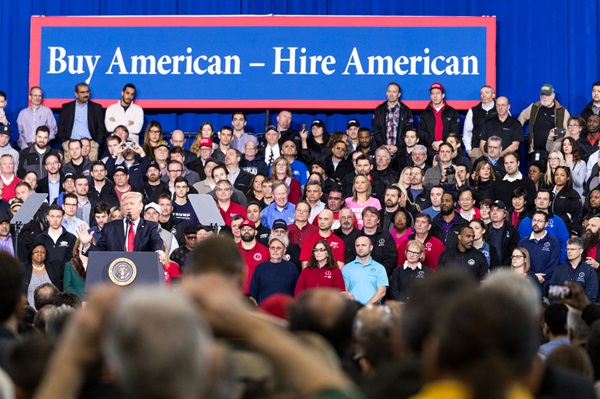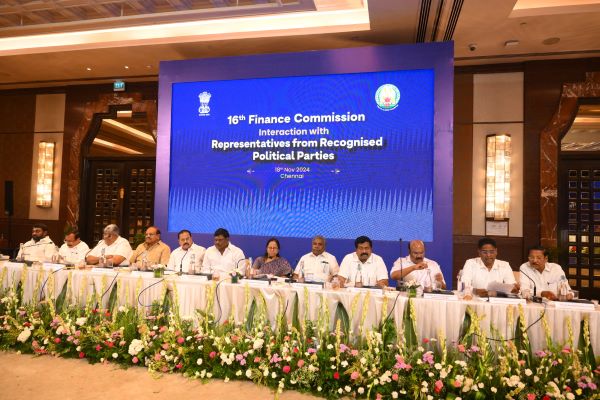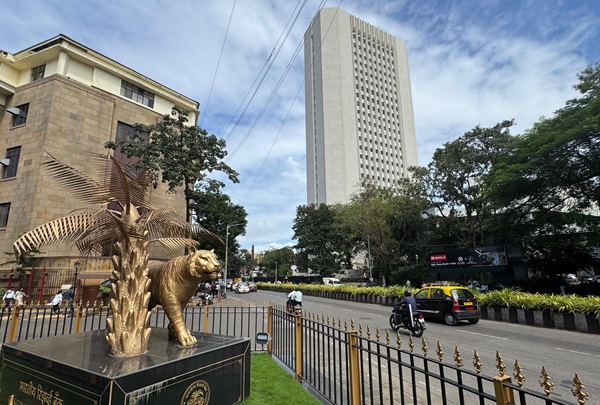.png)
Sandeep Kumar, IRS, is a former Special Secretary to the Government of India and Member, Central Board of Indirect Taxes & Customs
April 4, 2025 at 4:29 AM IST
An evaluation of Trump 2.0 and the events of Apr 2, 2025, require a stocktaking of the US economy. We have to start from Covid-19 and the unbridled infusion of liquidity by the US of $14 trillion in the last five years. Today, public debt is over $36 trillion, involving annual interest payment approaching a trillion dollars. The trade deficit in 2024 reached a record high of $1.2 trillion. Not far back, inflation had soared to record highs and in response, interest rates were raised at the fastest pace ever. While interest rates remain elevated for over two years, other indices have defied gravity. Economic growth, asset prices, Wall Street, the US dollar and job growth have never been stronger (American Exceptionalism). Every flaw in the US economic model was drowned in the celebrations of a buoyant Wall Street.
However, saner voices have continued to warn that the US economy has entered an unsustainable debt spiral. Yet, when it comes to suggesting a plan for addressing structural flaws, there is little other than platitudes. For instance, in an opinion column in Bloomberg by Michael Bloomberg - "America Is Headed for a Grim Fiscal Reckoning" - while making a foreboding assessment, concludes by saying, "The only sensible approach is to combine moderate tax increases and judicious cuts in spending." It doesn't really enlighten any President staring down an abyss of debt except act as an affirmation for a 'Great Reset'.
President Trump does not miss a single opportunity to emphasise that bringing down the national debt and reducing the trade deficit are his top priorities. So he and his team have hit the shop floor with sleeves rolled up. No tinkering, no moderation only straight up disruption. The administration has conjured a policy of cutting expenditures by $1 trillion and imposing tariffs to reduce imports as well as to incentive domestic manufacturing and investment. The jury is going to be out for a long time.
Amongst the major economies, the US has maintained the lowest tariffs in the world (weighted average having remained consistently sub-3% since last 30 years). More recently, President Trump has also brought into focus their low levels of Sales Tax, which ranges from 0% to 10% (US does not have VAT/GST), while criticising EU's high rates of VAT. The Trump administration has also attacked many trading partners on non-tariff barriers, which is not to be obfuscated with conformity standards for the simple reason that the US has one of the highest ratios (Coverage Ratio of 77% and Frequency ratio of 62%, according to wits.worldbank.org). Instead, Trump administration asserts that the contrasting and discriminatory standards in codification of laws, transparency and predictability harm the interest of US companies. In the end, it's all about market access.
Trade deals seek to leverage market access. Countries embark upon free trade agreements to get duty-free market access for their exporters. Since both sides are negotiating for the same thing, each nation has to pay a price in terms of tariffs concessions. The process involves much give and take, including balancing domestic interest of farmers and manufacturers, who could get hurt without protection of tariffs. It's a complex game to which have been added issues like trade facilitation and conformity assessment, services, investment, intellectual property protection, trade remedies, even environment and movement of persons (Comprehensive Economic Partnership Agreements). Trump is inviting trading partners to come on the negotiating table and make deals. It is emphasised in every statement. After all, they are called reciprocal tariffs for this reason. It is pointless to sit in judgment as to what justification (or data sheet) was used to arrive at it. No need to dwell on the wrapping paper, instead get inside it. Welcome to the world of bilateral deals.
The increasing trend of bilateral deals has been lamented upon by international trade economists (373 regional trade agreements are in force), which have effectively become the nemesis of the WTO. On April 2, 2025, many penned an epitaph for the WTO. It is not to say that system bilateral trade agreements and deals is working well. Global trade imbalances, with China and other countries dominating manufacturing, have become a precursor for upending trade policy in countries running trade deficits.
Bilateral deals, particularly after an open invitation from Trump, will create huge global uncertainty. Assume that a manufacturer decides to leverage a tariff differential with another country for accessing US markets. He starts to invest in building manufacturing capacity. During this process, another bilateral deal between any country and the US is finalised. It could completely upend all calculations.
Professor Jagdish Bhagwati in his seminal work - 'Termites in the Trading System' - quotes Victor Fung's piece published in Financial Times on November 3, 2005 - "Bilateralism distorts the flow of goods, throws up barriers, creates friction, reduces flexibility and raises prices. In structuring the supply chain, every country of origin rule and every bilateral deal has to be tacked on as an additional consideration, thus constraining companies in optimising production globally. In each new bilateral agreement, considerations relating to “rules of origin” multiply and become more complex. This phenomenon is what trade experts call the “spaghetti bowl effect.” While larger companies have a hard time keeping track, for small groups it is impossible. Bilateral agreements cause the business community to work below its potential. In economic terms, bilateral agreements destroy value. If left unchecked, their continued growth has the potential to hinder the development of the global production system."
Could this have been more profoundly said? Perhaps, better to stay frozen for a while and watch the paint dry.
Also Read:
What Drives Trump's Madness
Reciprocal Tariffs: Brace For Impact
Trump’s Tariff Shock Revives Mercantilism, Endangers Global Trade
Bilateralism Trumps Multilateralism As US Resets Trade Terms
India’s Muted Response To US Tariffs Contrasts With Global Assertiveness
India Likely to Gain from Trump’s Tariff Overhaul
India Singled Out In Trump’s Escalating Tariff crusade




